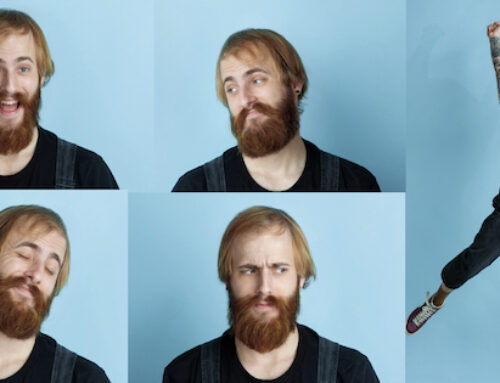
In our daydreams it is easy to be a hero; we can all imagine ourselves better than we are, more successful, competent and happy. When we doubt ourselves, or if others subject us to put-downs or insults, when we temporarily lose face and feel bad about ourselves, then we do even more of this compensatory fantasising. Then, we walk tall, give as good as we get and always ready with a quip and say the right thing at the right time.
We create an image of ourselves that has all the qualities we feel we lack. Our thinking is a powerful ally, but most of us never use it as we could.
Becoming the person you want to be is a lot easier than you might think. After all, every successful project starts with a vision, an idea of how the end product will look. It is the same with our own development, we need to see where we are going and how we would like things to be when we get there.
Visualisation is the technique for doing this. Creating a mental image of what you want to achieve, how you want it to be starts to create the circumstances that allow wishes to become reality.
Sounds far fetched? Well, look at it this way. Our thinking dominates how we view ourselves and the world we inhabit. Most of us manage to create negative images of ourselves and our prospects by constantly listening to our ‘self talk’. Negative thinking works and we fulfil our negative beliefs about ourselves without difficulty.
Since we all create our own, often negative, reality from how we think, why not turn it around? Visualisation is practiced by world-class athletes and successful people in all walks of life.
The best way to test this is to try it.
Visualisation exercise 1
At a time when you can practice undisturbed, sit or lie comfortably. Then create a mental image of a time and place where you felt safe, warm, secure and peaceful, with only pleasant feelings. It can be based on a real experience, or you can create a ‘special place’ which is only available to you. Make it vivid. Use all your senses to imagine that you feel for example, the sunshine, the breeze, whatever feels enjoyable. Picture the colours, hear the sounds. Practise visualising this scene as often as you can. When you want to feel calm then think of this scene and imagine it for a short while. Then return your thoughts to the matter in hand. The sense of calm should stay with you and enable you to cope better with whatever comes.
Visualisation exercise 2
Once you have become proficient at basic visualisation you can start using the technique to build your confidence in dealing with the bully.
When you have relaxed in your special place, conjure up an image of you conducting yourself in such a way that the bully can’t get at you. If this seems like too big a step, start with something more accessible and work up to dealing with the bully (in your imagery) from there. For example:
Relax and go to your ‘special place’
Think of a character who manifests the type of image and behaviour you’d like to cultivate in yourself. This can be an animal, film character, actor or other personality. The important thing here is to focus on the qualities you want to develop in yourself, how you would like others to see you. For example, confident, self-assured, respected, popular, cool…
Once you have defined the character and their qualities, visualise seeing yourself behaving in that way. See yourself smiling, looking confident etc. Get a sense of how it feels as you take yourself through a scenario involving the new you.
Practice this daily (more often if you like), and gradually expand your repertoire of scenarios until you can picture yourself speaking and acting with confidence.
Keep it up and make this sort of exercise part of your daily routine. Once you have dealt with the bullying you can set about creating the life you really want.







